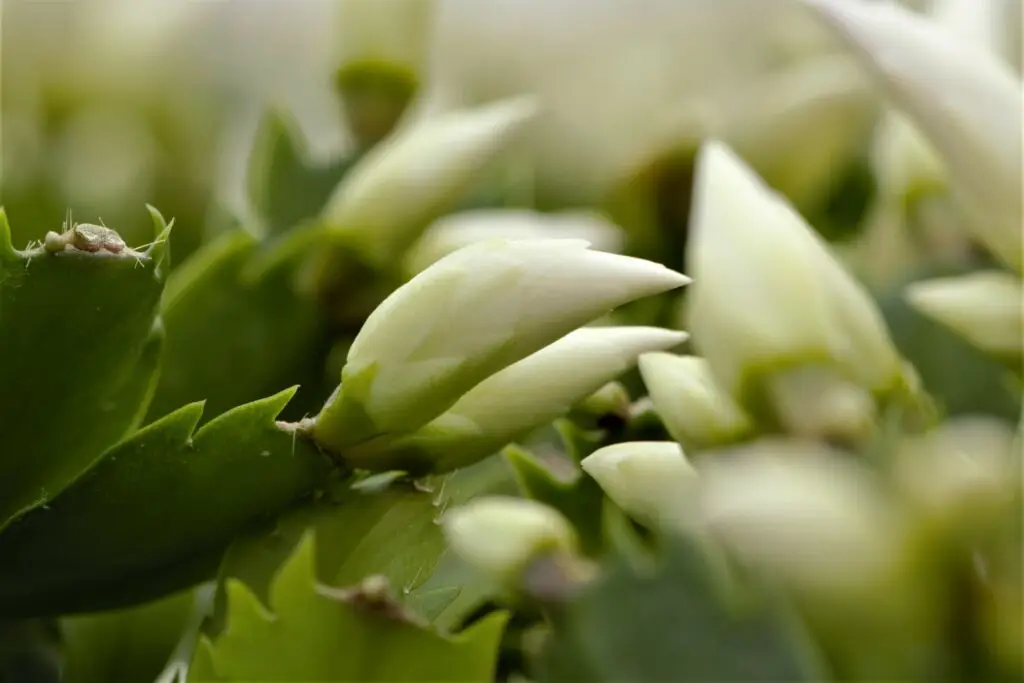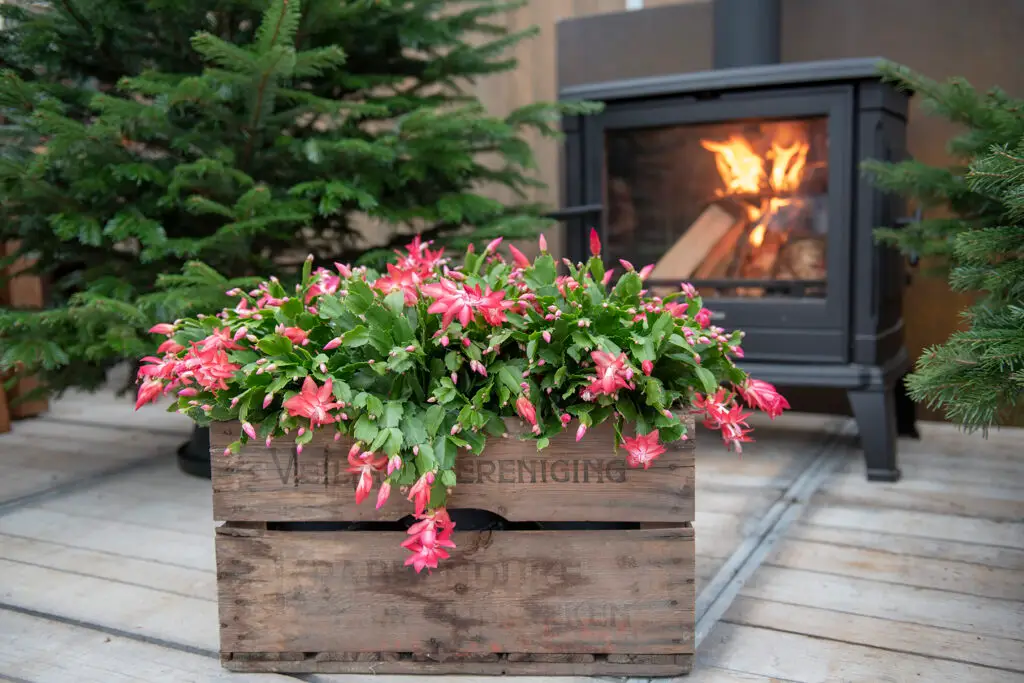Schlumbergera
| Name: Schlumbergera | Family: Cactaceae | Type Plant: Epiphytic cactus (succulent) |
| Flowering time: Late autumn to winter (November to January) | Best time to buy: Autumn (just before blooming season) | Max Height: 30-45 cm |
| Sun/Shadow: Bright, indirect light; avoid direct sunlight to prevent leaf burn |
Origin
The Schlumbergera is a wonderful lid cactus that naturally originates in Brazil, where it grows as epiphyte on other trees and plants. The plant mostly occurs in mountain area’s and at the Brazilian sea shores São Paulo and Rio de Janeiro.
The name Schlumbergera comes from Frédéric Schlumberger, a well-known Cactus collector and grower.
Characteristics
Apart from the interesting fact that the Schlumbergera is an epiphyte, the plant also impresses with its hanging branches but tough flowers. That’s why this plant is ideal for decoration in hanging baskets.
Most Schlumbergera’s that are up for sale are hybrid species that come in a lot of colours, such as pink, white, yellow or orange. The green leaves of the plant are flat with serrated edges. The plant takes the winter months to bloom profusely. The shorter the day, the more flowers appear. When the flower buds have formed, make sure that the Schlumbergera isn’t moved from its place. The cactus doesn’t like change and it will cause the buds to fall out.
Care
The plant needs light but doesn’t like to be in the bright sun. Keep the plant moist. Unlike other lid cactuses, the Schlumbergera needs a good amount of water once in a while. Although the plant needs to be always moist, it shouldn’t be soaking wet. The Schlumbergera is able to store a lot of water because of the climate the plant comes from. In the Atlantic rainforest the weather can be dry for a long time before it starts raining again. The best way to know if your Schlumbergera needs water, is to feel the soil of the plant with your finger. If it’s dry, add some water. When it’s still moist, the plant is fine. You can also give the plant some plant food every two weeks, to boost the growth and give it more nutrients.
Blooming time
The Schlumbergera blossoms from October until January. During this time, multiple flowering periods present themselves. The flower buds appear in great amounts on top of the leaves. Because the Schlumbergera often blooms during Christmas, the plant is also known as Christmas Cactus. The colourful Schlumbergera can be enjoyed year-round, especially during the cold winter months. The Christmas Cactus is a real eyecatcher that can be perfectly combined with your Christmas tree or other winter plants such as the Hippeastrum.








